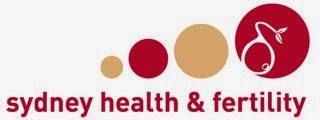 Transitioning into menopause is a natural part of life. All women will experience a biological decline
Transitioning into menopause is a natural part of life. All women will experience a biological decline in ovarian function leading to the end of their fertility and capacity for reproduction. However, the actual experience of menopause for women is individual and is influenced by a multitude of biological, cultural, socioeconomic and lifestyle factors.
Menopause is derived from the Greek words men (month) and pausis (cessation). Twelve months without a period is the commonly accepted rule for diagnosing menopause.
Three intervals have been defined in a woman’s reproductive life:
Reproductive stage: from the first menstrual period to the beginning of perimenopause.
Perimenopause: characterised by increased variability in cycle length, two skipped menstrual cycles with 60 or more days of amenorrhoea (absence of menstruation) or both. This physiological transition may continue over the course of 4 to 5 years. Hormonal changes signalling the beginning of the perimenopausal period often begins in a woman’s mid-forties characterised by menstrual irregularity. It usually begins with cycle shortening followed by cycle lengthening and the flow may be scantier or more profuse. The length of this transition will vary because each woman’s physiology & fertility pattern is different. This stage concludes with the final menstrual period and the beginning of post menopause.
Postmenopause: begins at the time of the final menstrual period, although it is not recognised until after 12 months of amenorrhoea. In Australian women, the average age of menopause is 52.9 years with the onset ranging from 45-64 years of age.
Signs & Symptoms
During perimenopause, as the ovaries are preparing for the cessation of their main role, hormone levels change. It is this hormonal change that causes menopausal symptoms. Symptoms differ among women, and may range from mild to severe. Some women have few or no symptoms.
Classic symptoms:
- Change in menstrual cycle pattern and decline in fertility
- Hot flushes & night sweats
- Vaginal dryness, lowered libido
- Sleep disturbances
- Lack of energy
- Cognitive concerns (memory, concentration), dizzy spells
- Headaches
- Heart palpitations
- Urinary frequency, incontinence
- Psychological symptoms (depression, anxiety, moodiness, nervous tension)
- Aches and pains
- Weight gain
- Dry skin, formication (a sensation of ‘ants’ crawling on skin)
- Dry eye, vision changes, blurred vision
- Hair changes: rogue hairs, hair loss and thinning
- Higher body mass index
- Lower levels of physical activity
- Lifestyle choices such as smoking and alcohol consumption. Smoking reduces the age of onset of menopause in a dose-dependant manner.
- Women with negative attitudes towards menopause and/or ageing
- Those who live in a negative psychosocial environment
- A diet containing high levels of phytoestrogens, common in Asian countries
- Women with lots of children and long duration of breastfeeding
- Cultures that regard menopause as a positive transition
- Mothers and daughters tend to experience menopause at the same age.
- Thinner women may experience a slightly earlier menopause (due to the fact that body fat contributes to oestrogen production)
- The age of menopause has not changed since ancient times
- Research shows up to 82% women use complementary and alternative medicines to treat their menopausal symptoms
Stay tuned for our next SeedPod full of meal ideas & recipes for those in the stages of menopause!







